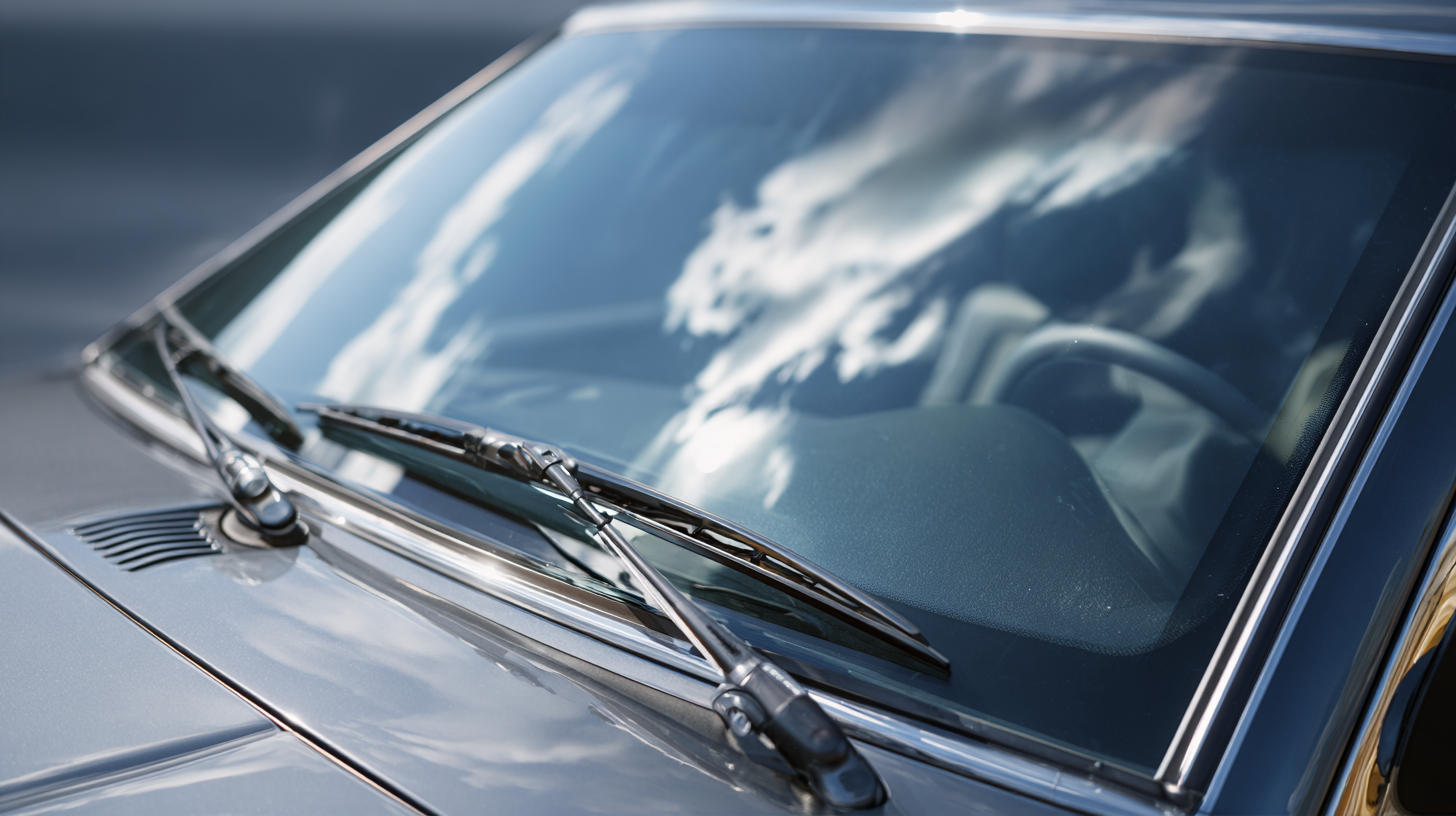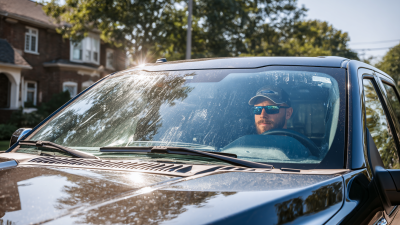Choosing the Right Glass Windshield: Tips for Optimal Safety and Performance
When it comes to ensuring the safety and performance of vehicles, the choice of a glass windshield plays a critical role. According to a report by the National Highway Traffic Safety Administration (NHTSA), approximately 70% of a driver’s field of vision comes through the windshield, making it an essential component for visibility and accident prevention. Furthermore, the Automotive Glass Replacement Safety Standards (AGRSS) highlight that a properly installed windshield contributes significantly to the structural integrity of the vehicle, especially during collisions. With advancements in technology and material options available, selecting the right glass windshield is not merely a matter of aesthetics; it is a pivotal decision that influences safety. This guide provides valuable tips for choosing the optimal glass windshield, ensuring both functionality and compliance with industry standards.

Understanding Different Types of Windshield Glass: Safety and Performance Features
When it comes to choosing the right windshield glass, understanding the different types available is crucial for both safety and performance. Laminated glass, for instance, is a popular choice for modern vehicles. This type of glass consists of two layers with a plastic interlayer, which not only reduces the risk of shattering during an impact but also enhances noise reduction inside the vehicle. Additionally, tempered glass, known for its strength and resistance to thermal stress, is often used for side windows but is not recommended for windshields due to its propensity to shatter upon impact.
When selecting windshield glass, ensure it meets safety standards specified by organizations like the DOT (Department of Transportation) and AS1 for optimal protection. **Tip:** Always consult a professional when replacing your windshield, as they can help you choose the right type of glass suited for your vehicle's make and model.
Another important aspect to consider is the performance features of the glass. Some windshields come with advanced coatings that repel water and dirt, enhancing visibility during inclement weather. **Tip:** Look for windshields equipped with UV protection to shield both you and your vehicle’s interior from harmful rays. Prioritizing these features will not only contribute to safer driving experiences but also improve the longevity of your vehicle’s interior.

Factors to Consider When Choosing Windshield Glass for Your Vehicle
When selecting the right windshield glass for your vehicle, several critical factors come into play that can significantly influence both safety and performance. Firstly, the material type is paramount. Most modern windshields use laminated safety glass, composed of two layers of glass with a plastic interlayer. This construction not only offers better resistance to shattering but also enhances acoustic insulation, reducing noise levels by approximately 30%. According to the National Highway Traffic Safety Administration (NHTSA), a properly installed laminated windshield can decrease the likelihood of serious injury during an accident by up to 50%.
Another important aspect is the windshield's fit and compatibility with your vehicle model. Poorly fitted windshields can compromise structural integrity and lead to leaks or increased road noise. The Automotive Glass Replacement Safety Standard (AGRSS) indicates that improperly installed windshields contribute to nearly 20% of vehicle accidents during rollover incidents. Thus, it’s crucial to choose OEM (Original Equipment Manufacturer) glass whenever possible, as it meets the specific safety and quality standards set for your vehicle model. Furthermore, consider the tint and UV protection offered by various windshields, as these features can help reduce glare and protect the interior from sun damage, enhancing both comfort and longevity.
Evaluating Manufacturer Reputation and Quality Standards for Windshield Glass
When selecting a glass windshield, evaluating the manufacturer's reputation and quality standards is crucial for ensuring optimal safety and performance. According to the National Highway Traffic Safety Administration (NHTSA), over 20 million vehicles are involved in windshield-related claims each year, highlighting the importance of choosing high-quality materials that meet stringent safety guidelines. Manufacturers that adhere to standards set by organizations like the American National Standards Institute (ANSI) are more likely to produce reliable windshields capable of withstanding impact and weather conditions.
Tip 1: Always research the manufacturer's history and customer reviews. A company with a long-standing record of quality production and positive feedback from consumers typically indicates reliable products. Look for brands that have received certifications from prominent safety organizations.
Tip 2: Pay attention to the materials used in the windshield construction. Automotive glass should meet or exceed safety standards, such as those outlined in the Federal Motor Vehicle Safety Standards (FMVSS). The use of laminated safety glass can provide additional protection against shattering.
Tip 3: Consider warranties and guarantees offered by manufacturers. A reputable manufacturer will often provide comprehensive warranties, indicating confidence in their product's durability and performance.
Importance of Professional Installation and Regular Maintenance for Windshields
When it comes to ensuring the safety and performance of your vehicle, the installation and maintenance of windshields play a critical role. Professional installation is essential, as it guarantees that the glass is fitted correctly, which is vital for structural integrity and occupant protection. Improper installation can lead to leaks, wind noise, or even the risk of the windshield shattering during an accident. Engaging experienced technicians who adhere to industry standards can significantly reduce these risks.
Regular maintenance is equally important in preserving the functionality of your windshield. Regular inspections can catch small issues before they evolve into larger problems. For instance, adherence to vehicle safety checks and immediate repairs of chips and cracks can prevent further damage and ensure that the glass remains a reliable protective component. As the automotive industry evolves, particularly with advancements in autonomous driving technology, windshields are becoming more sophisticated. This underscores the need for ongoing professional care to ensure that all features function as intended and provide optimal safety for drivers and passengers alike.
Choosing the Right Glass Windshield: Tips for Optimal Safety and Performance
| Windshield Type | Safety Ratings | Performance Features | Installation Recommendations | Maintenance Tips |
|---|---|---|---|---|
| Tempered Glass | Good | High impact resistance | Professional installation required | Inspect regularly for chips |
| laminated Glass | Excellent | Sound insulation | Professional installation recommended | Clean with glass cleaner |
| Polycarbonate | Fair | Lightweight and shatter-resistant | Usually flexible installation options | Avoid harsh chemicals |
| Curved Windshield | Good | Improved aerodynamics | Needs specialized installation | Check for seal integrity |
Tips for Recognizing Signs of Windshield Damage and When to Replace It
When it comes to ensuring optimal safety and performance in your vehicle, paying attention to your windshield is crucial. A damaged windshield can compromise not only your visibility but also the structural integrity of your vehicle. According to the National Highway Traffic Safety Administration (NHTSA), a windshield plays a vital role in the deployment of airbags and the overall safety of the cabin during a collision. Therefore, recognizing signs of damage is essential for both safety and legal reasons.
Tips for identifying potential windshield damage include looking for chips, cracks, or distortions in your line of sight. Small chips could be repaired, but if they exceed a quarter in size or if there are multiple cracks, it's time to consider a replacement. Additionally, if you notice a spreading crack or feel vibrations while driving, these are critical indicators that professional intervention is necessary. The American Automobile Association (AAA) recommends that drivers regularly inspect their windshields for such signs to enhance safety and prevent more extensive, costly repairs in the future.
Another important tip is to be mindful of environmental factors that can exacerbate windshield damage. Changes in temperature and exposure to direct sunlight can cause existing cracks to expand. The Glass Association of North America (GANA) notes that extreme weather can lead to deterioration of the adhesive bond between the windshield and the vehicle frame. Thus, if you live in an area with fluctuating temperatures, it’s prudent to monitor your windshield more closely and seek replacements sooner rather than later.

Related Posts
-

Exploring the Top Auto Glass Repair Services in Miami: What You Need to Know
-

How the Windshield Doctor Revolutionizes Auto Glass Repair: Tips for Car Owners
-

Transform Your Ride: Ultimate Guide to Car Glass Fix Techniques for Every Driver
-

Transform Your Space with Expert Tips for Patio Door Install Innovations
-

Understanding the Importance of Quality Auto Glass Replacement in Calgary: A Comprehensive Guide
